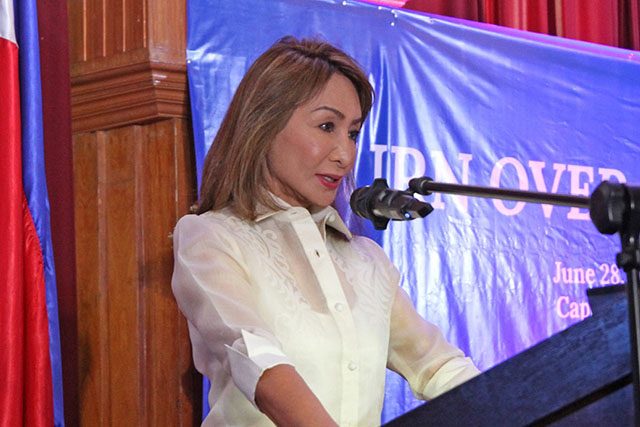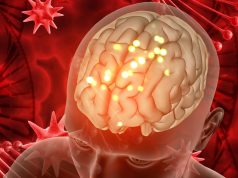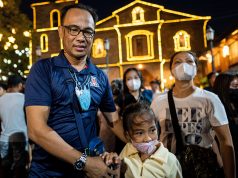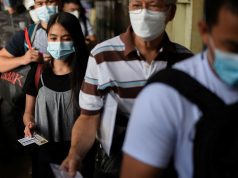
Filipino online users on Wednesday rallied behind the medical community through the hashtag #NoToDoctorShaming after Cebu Governor Gwendolyn “Gwen” Garcia extensively shamed a doctor who criticized the “tuob” or steam therapy the government employees are enjoined to perform.
In a Facebook Live streamed through the Cebu Provincial Government page on Tuesday, Garcia called out a doctor who posted on social media her thoughts about a memorandum urging officials of Cebu City to practice “tuob” twice a day in their workstations.
The memorandum stated that it is a “wellness program for Cebu Provincial Capitol to employees to combat against COVID-19 pandemic.”
It was issued amid the rising cases of the COVID-19 cases in the city which is feared to be the next “hotspot” of the virus in the country.
Garcia in the video reportedly claimed that the doctor looks down on government officials and told her to run as a politician instead.
She also mentioned the doctor’s full name and medical background, as well as shared the latter’s pictures and account information onscreen.
Garcia likewise questioned the doctor’s qualifications and allegedly undermined her two years of experience.
‘Tuob’ in relation to COVID-19
“Tuob” is the act of inhaling steam from a bowl of boiled water infused with lemon, ginger or eucalyptus in an enclosed space to induce sweat. It is a home remedy usually used for common colds.
Garcia reportedly said that asymptomatic patients and those with mild symptoms of COVID-19 could practice it so that they wouldn’t have to go to hospitals which are at full capacity.
While the practice is advocated by Dr. Dale Pasco who claims that it could prevent the virus from progressing further into the body early on, foreign experts have a different take.
Reuters noted that the United States’ Centers for Disease Control and Prevention and the World Health Organization do not suggest steam therapy as a cure for the viral disease.
“A representative from the CDC told Reuters that he was not aware of any scientific studies that show steam therapy helps with the coronavirus,” the report said.
It acknowledged that while it could help those with colds or flu, “overall scientific studies showing evidence of its usefulness is lacking.”
Medical experts also believe that the practice also makes people at risk of having a burn injury since it requires one to be in contact with boiled water, as well as the hot container.
What does it take to be a doctor?
Meanwhile, the day after Garcia went live on Facebook, the hashtag #NoToDoctorShaming trended on local Twitter with posts defending doctors and medical professionals following the governor’s remarks.
A Twitter user noted that while “anyone” can be a governor or a politician, not everyone “has the perseverance and dedication to become a doctor.”
Another online user said that doctors, regardless of their specialty and years of experience, “have sacrificed half of their lives for medical education and improving the quality of health of people.”
“Shame on you. #NoToDoctorShaming,” the online user added.
Another Filipino likewise pleaded Garcia not to “belittle or discredit doctors” since they “studied and dedicated a great part of their lives well enough to know what they are talking about.”
A Twitter user shared an infographic to show the process that doctors go through to fully become professionals.
Gwen Garcia, these are the hard steps on how to become a doctor. Thus, doctor shaming will never be acceptable. No to any forms of public shaming!#NoToDoctorShaming pic.twitter.com/lz4OUotglg
— IamElectric (@iamelectric97) June 24, 2020
A licensed physician claimed that for an individual to become a successful doctor in the Philippines, he must conquer the following steps:
- 4-5 years studying for a pre-med degree
- 4 years of medicine proper
- 1 year post-graduate internship
- 2 months of board exam preparation
- 3-6 years of residency training
- 1-3 years of fellowship training
Dr. Floriño Francisco, a pediatrician, wrote that “it takes almost two decades to really become an accomplished physician.”
“If one is really intent on becoming a doctor, he or she should do well in high school in order to get into a good undergraduate college for the preparatory medical studies concentrating on the sciences,” he said in a column.
“Once through with the four-year course, one has to take and make sure to get a good enough score (at least in the 90th percentile) in the Medical College Admissions Test. This is designed to assess the aptitude, problem-solving and writing skills of the applicant,” Francisco continued.
He said that if the individual is accepted into medical school, the students “are expected to give undivided attention to their studies for the next two years, as they go through the intricacies of physiology, anatomy, biochemistry, neuroanatomy and pathology, among other medical subjects.”
Students will then undergo medical clerkship, another year of rotating internship, take the licensure exams, do residency and then take the specialty board exam to practice their medical specialties.









